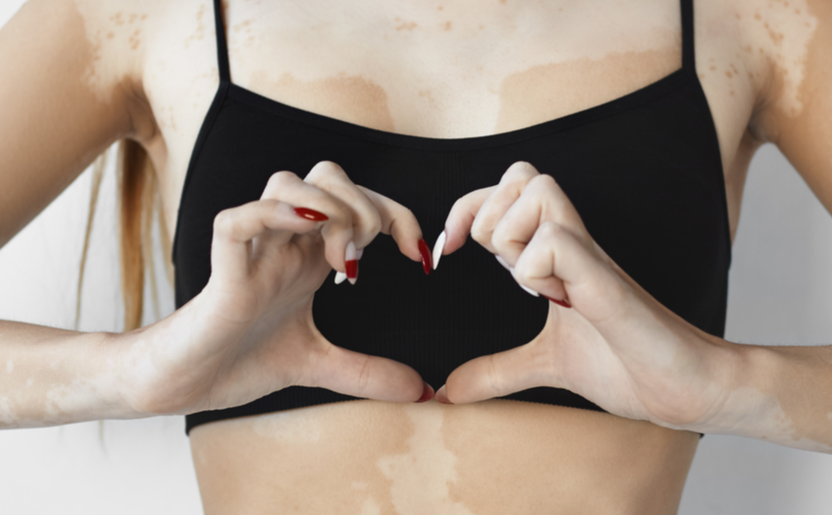
Vitiligo Society representatives to participate in NICE consultation for Ruxolitinib
The Vitiligo Society have been invited to participate in the National Institute for Health and Care Excellence (NICE) scoping consultation for the Health Technology Evaluation of Ruxolitinib for treating non-segmental vitiligo in people 12 years and over.
The purpose of the evaluation will be to appraise the clinical and cost effectiveness of Ruxolitinib within its marketing authorisation for treating non-segmental vitiligo in people aged 12 years and over.
Who are NICE and why is the appraisal of Ruxolitinib and our involvement significant?
In England and Wales, the National Institute for Health and Care Excellence (NICE) have the responsibility for carrying out an appraisal prior to any drug being approved for use through the National Health Service (NHS).
The appraisal process considers the outcomes of the treatment which are currently suggested as re-pigmentation; maintenance of response; cessation of spread or stabilisation of vitiligo; global assessment of vitiligo; cosmetic acceptability; adverse effects of treatment & health related quality of life. It also considers the cost effectiveness of the treatment, taking into consideration the impact the treatment has on quality of life.
Participation in this process means:
- we are ensuring that our community’s voice is being heard, that people living with vitiligo form part of this process.
- that NICE are aware that vitiligo is so much more than just a cosmetic condition – it can significantly impact a person physically, psychologically and socially.
- we can ensure that the true impact that more effective treatments could have on our community is understood by appraisal decision makers.
- we can give feedback so to whether NICE are asking the right questions during the consultation.
What is Ruxolitinib?
Ruxolitinib (Opzelura, Incyte) is a topical formulation. Ruxolitinib does not currently have a marketing authorisation in the UK for nonsegmental vitiligo. It is being studied in clinical trials comparing ruxolitinib with vehicle cream in people aged 12 years and older with non-segmental vitiligo. It was made available in the US and is currently awaiting approval in the EU and UK.
Is there an option to get involved in the clinical trials?
NICE’s role is evaluate the clinical and cost effectiveness of medicines to make a recommendation on routine use by the NHS in England and Wales. However, they don’t conduct or directly commission clinical trials and research. Instead when we are developing guidance we evaluate evidence on the effectiveness of the treatment provided by the company (typically the manufacturer) The National Institute for Health Research will be better placed to let you know about any ongoing research in this area. You may also wish to refer to the NHS website to read about clinical trials. In addition, you could contact the manufacturer of ruxolitinib (Incyte) to see if they are running any trials that you could join.
What is non-segmental vitiligo?
Vitiligo commonly affects the face, neck, hands and skin creases. It can be classified as segmental (unilateral or localised) in which only one area of the body is affected or non-segmental where symmetrical patches can appear on both sides of the body. Non-segmental vitiligo may be categorised as:
• focal (small, isolated, depigmented patch without an obvious segmental distribution pattern)
• acrofacial (depigmented patches on the hands, feet and or face, especially around orifices)
• mucosal (depigmented patches on the mouth and/or genital mucosa)
• follicular (depigmented body hairs)
• generalised (usually symmetrical, depigmented patches randomly occurring over the entire body) • universal (complete or nearly complete skin depigmentation)
• mixed (both segmental and non-segmental forms co-exist), or
• unclassified (isolated mucosal involvement and persistent focal vitiligo)
What about Ruxolitinib and the treatment of nonsegmental vitiligo?
According to Dr John Harris, Professor and Chair of the Department of Dermatology in UMass Chan Medical School.
Segmental is harder to treat because it turns the hairs white quickly. Clinical trials usually exclude people with segmental vitiligo because of this, they want to have the best chance of showing if their drug works. When a drug is approved it is only approved for the type of disease tested in the clinical trials, so that’s why Ruxolitinib is approved only for nonsegmental vitiligo. Ruxolitinib seems to work well in segmental vitiligo if the hairs are still their normal colour, and doesn’t work well in any vitiligo where there isn’t hair growing, or most of the hairs are white.
What happens next?
We expect NICE to publish final guidance in March 2024. They can only publish final guidance when a medicine has received its licence from the MHRA. Further information about the status of ruxolitinib is available from the MHRA. We’ll continue to share developments on this and any other treatment that NICE make us aware of, don’t forget to subscribe to our Newsletter for updates.
You can also follow the progress by visiting the NICE website.
Please support our work! You've enjoyed 1 article this month and we hope you have found it useful. Our work is entirely funded by memberships and donations, so please consider joining our charity today and supporting our work.
Already a member? Log in





